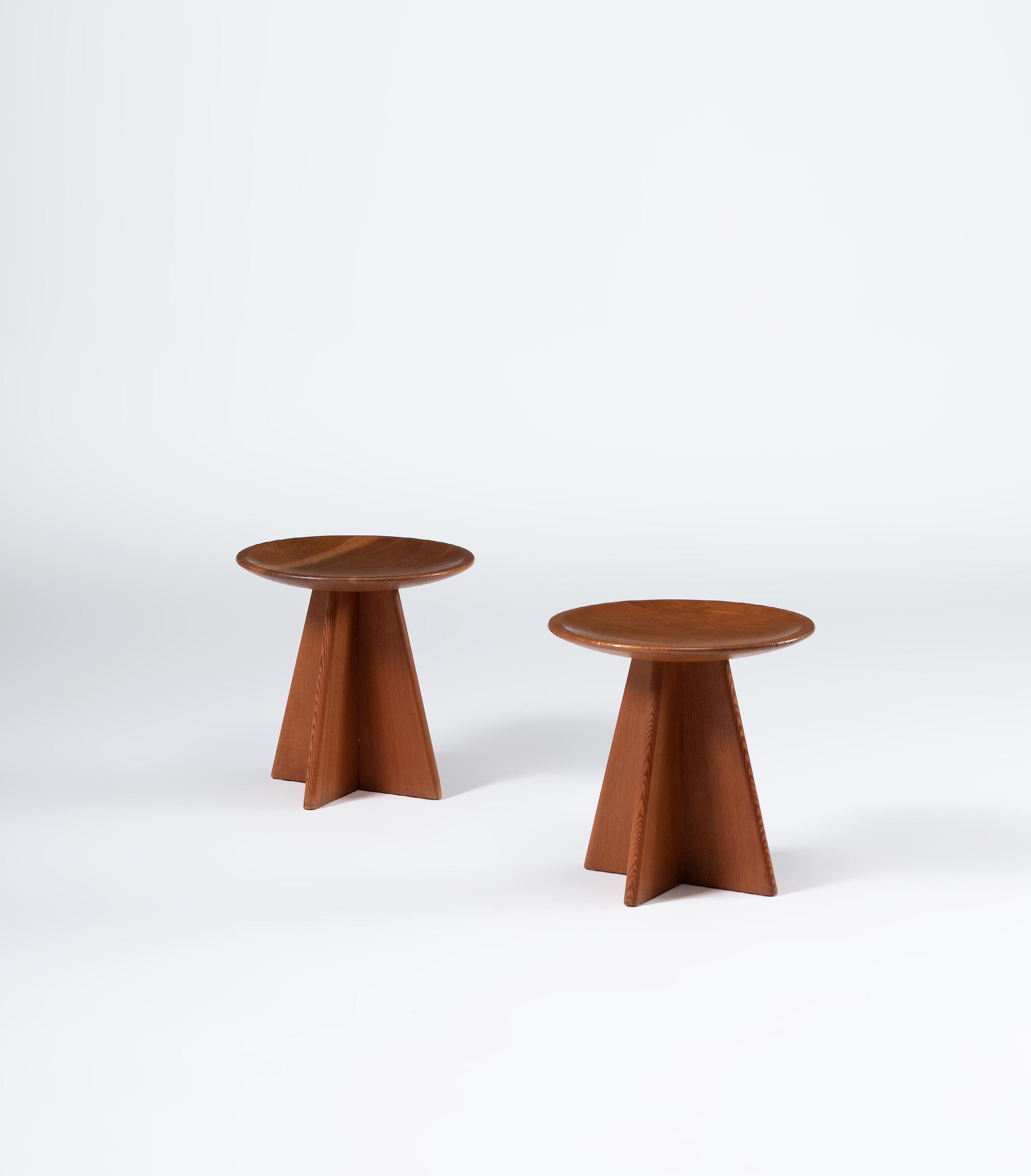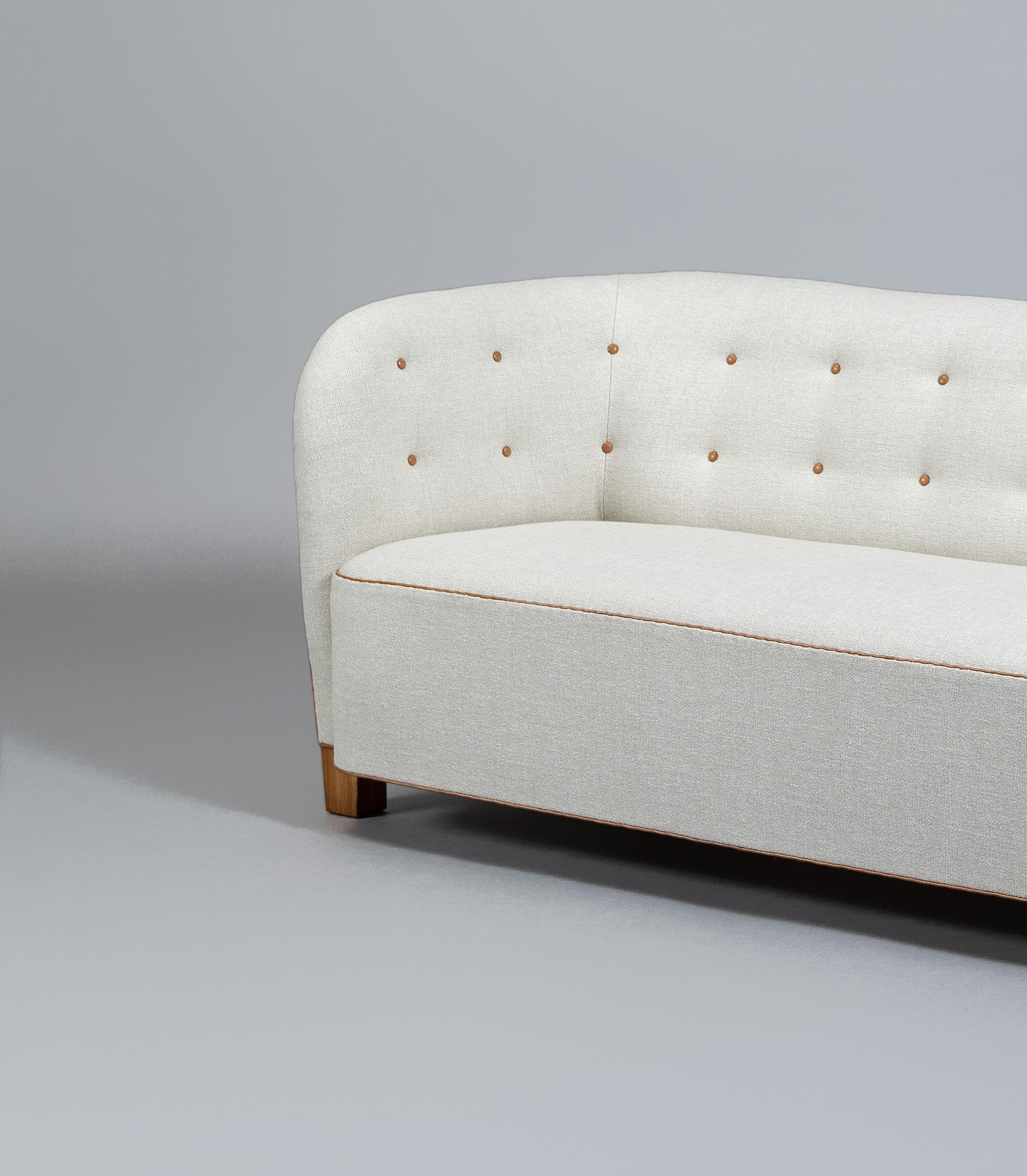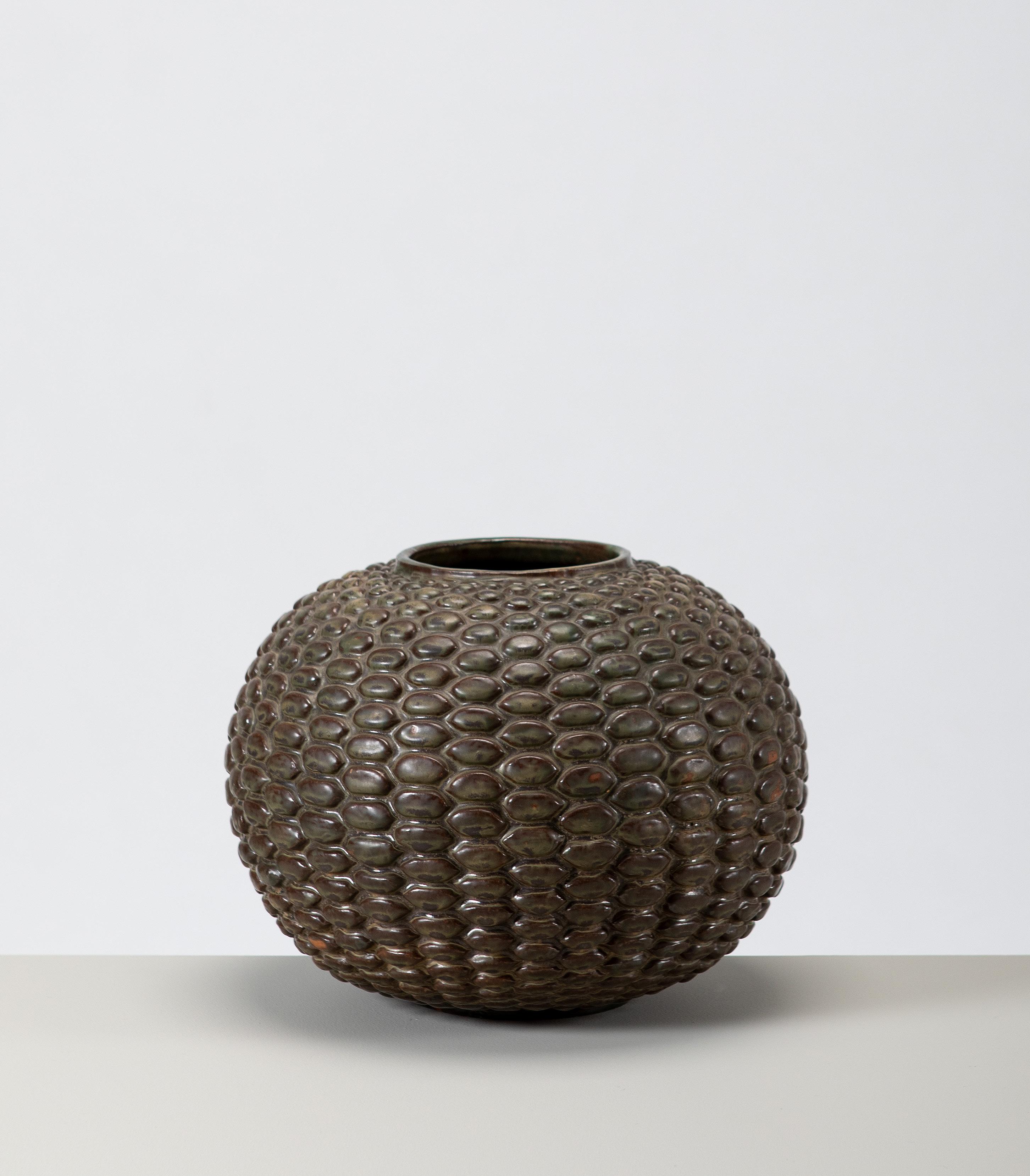TEFAF NEW YORK 2023






NEW YORK 2023
MAY 12 -16
PARK AVENUE ARMORY
BOOTH 320


Denmark
Partners desk, 1935
Oak, leather and nickel-plated metal
Made by N.C. Jensen Kjær
Provenance: Founder of the Danish Handicraft Guild
Gertie Wandel


In 1935, architect Mogens Koch was assigned to design a small collection of furniture for a very special project for textile artist, politician and founder of the Danish Handicraft Guild Gertie Wandel. She was a woman with a longstanding involvement in the art world, known for her relentless devotion to preserving traditional crafts. Wandel undoubtedly appreciated the minimalistic aesthetic of modernism and in 1935 she hired Arne Jacobsen – a promising, young architect, known for his modernist approach - to design the villa. The present Partner’s desk was part of the furniture designed specially by Mogens Koch for the villa, located on Parkovsvej 19 in Gentofte north of Copenhagen.
Subsequently, the desk was only made to order – just six examples were made with a leather-covered top like the present, and an additional seven examples were made with a wooden top. In 1938 the desk was shown to the public at The Copenhagen Cabinetmakers’ Guild Exhibition.
Mogens Koch (1898-1992) graduated from the School of Architecture at the Royal Danish Academy of Fine Arts in 1925, and from 1925-1930 he worked with the father of modern Danish furniture design Kaare Klint, who became a strong influence in his work. His profession as an architect bestowed him with a natural flair for creating furniture that perfectly adapts to its surrounding architecture, and like Klint, he had a pragmatic approach to design. Most of his pieces emerged out of a given task, hence his designs serve their functional purpose to perfection. The present desk clearly represents the core principles of the Danish functionalist tradition. It embodies respect for the functional demands of everyday furniture whilst expressing a beautiful simplicity in composition, construction and high-quality materials.
These principles were equally present in the design of the villa for which the desk was designed. Arne Jacobsen was known for his mastery of proportions and function, so the villa provided the perfect setting for the desk. Like the majority of Koch’s furniture, it is characterized by a rational, harmonious and balanced appearance. The legs are finished with nickel-plated brass ferrules and the tabletop is covered with natural leather for a warm, tactile feel.
The Wandels were clearly a family of great taste and the realization of their villa by Koch and Jacobsen formed an extraordinary meeting between two of the most important figures in the history of Danish design.




Prism pendant, 1927
Copper, brass and crystal
Made by Louis Poulsen
Provenance: Palace Hotel, Copenhagen


Finland
Dish, 1960’s Glazed stoneware
Made by Arabia Dia: 48 cm

BARBRO NILSSON, 1899-1983
Sweden
Rug, Bankrabatten, grön, 1966

Wool, knotted pile
Made by Märta Måås-Fjetterström AB
298 x 447 cm


Pair of stools, 1962

Oregon pine
Made by Poul Hundevad
VILHELM LAURITZEN, 1894-1984
FRITS SCHLEGEL, 1896-1965
Denmark
Table lamp, 1928

Brass
Made by Fritzsches Glashandel


PK80 daybed, 1957

Matt, chrome-plated steel, plywood and leather
Made by E. Kold Christensen
Vase, 1943

Stoneware with Sung glaze
Made by Royal Copenhagen
Dia: 23,5 H: 20 cm

Hans J. Wegner (1914-2207) began his career as a cabinetmaker in 1931 and was renowned for his superb skills as a craftsman. As the son of a shoemaker, Wegner spent much of his early childhood, carving small figures out of the wooden blocks his father used to make shoe soles. He possessed an innate passion for craftmanship and enjoyed pushing the boundaries for what was considered possible. He understood his materials – wood in particular – and always succeeded in bringing out its natural qualities. Wegner worked with a wide range of furniture, from captivating, masterly hand-crafted pieces, to exquisite industrial furniture for everyday use.
In the 1940s, Wegner found himself caught between two opposing tendencies. A desire to create something more artistic and imaginative, while simultaneously striving to meet the demands of functionalism. Wegner had likewise witnessed a deterioration of the traditional crafts. He felt deep sympathy for the craftsmen who fell victim to industrialization and wanted to support their efforts to renew their profession. As part of this endeavor, Wegner designed three different cabinets between 1944-1950, where he experimented with applying vivid ornamentation to the surface of the wood. The first two cabinets were decorated using the intarsia technique, where carved-out pieces of different wood types are placed on a surface to create a pattern or motif. The first example was the renowned “Fish cabinet”, where Wegner himself created an outstanding sea bed motif, so well executed that it is often mistaken for a painting. In the second piece, he created a repetitive pattern of acorns and oak leaves to decorate the entire cabinet. Both cabinets are extraordinary, but Wegner being Wegner, was not quite content with this type of applied ornamentation. He wanted to create a piece that emphasized the power of craftsmanship while simultaneously highlighting the natural quality of the material.
The present “Crocodile Cabinet” designed in 1950, is the result of his efforts, and represents the perfect solution of combining his creative vision whilst staying true to the ideals of modernism. Instead of using the intarsia technique, Wegner turned to woodcarving – a disappearing craft at the time. As opposed to carving a figurative motif as in the previous cabinets, the pattern carved into the cabinet doors is more restrained with an abstract character mimicking the texture of crocodile skin. This technique creates a tactile exterior that naturally invites the hand to explore the surface.
In the rare Crocodile Cabinet, Wegner realized his artistic vision without interfering with the natural quality of the wood. When carving the motif directly into the surface, he could highlight the structure and distinctive character of the wood. However, this was a time-consuming and costly task that required an exceptionally skilled craftsman. So naturally, only a very limited number of cabinets were made. The outline of the cabinet is simple, with a minimalist construction, allowing the extraordinary cabinet doors to stand out as the main decorative feature.


Denmark
Crocodile cabinet, 1950 Oak and brass
Made by Mikael Laursen

Finland
Dish, 1960’s
Glazed stoneware

Made by Arabia
54,5 x 40 x 6,5 cm

From the top:
 BIRGER KAIPIAINEN, 1915-1988 Finland Dishes, 1960’s Glazed stoneware Made by Arabia
36,5 x 32 x 4 cm
25 x 23 x 3,5 cm 25,5 x 23,5 x 3,5 cm
BIRGER KAIPIAINEN, 1915-1988 Finland Dishes, 1960’s Glazed stoneware Made by Arabia
36,5 x 32 x 4 cm
25 x 23 x 3,5 cm 25,5 x 23,5 x 3,5 cm

Table lamp, 1940’s Brass, beech and textile





POUL HENNINGSEN, 1894-1967

Denmark
Set of pendants, 1926 Brass and painted copper
Made by Louis Poulsen
Folding chair, 1949

Oak, cane and brass
Made by Johannes Hansen


Denmark
Sofa, 1937

Textile, beech and leather
Made by A.J. Iversen
Kaj Gottlob (1887-1976) graduated from the Royal Academy of Architecture in Copenhagen in 1914 and quickly made a name for himself at the renowned architect Hack Kampmann’s office. In 1924 he became a professor at the Royal Academy, the same year as the first department of furniture design was established under the leadership of Kaare Klint. In 1936 Gottlob was appointed as Royal building inspector and the legacy of his work remains a vital presence within Danish architecture.
Gottlob was a well-travelled man who found great inspiration from his trips around Europe and Greece in particular. As an architect, he was highly inspired by the monumental ideals of classicism. According to him, it was crucial to reference the past and reinvent the classicist demands for clarity, moderation and harmony. The present sofa is a perfect testament to this ideology. The curved outline has a very time-specific 1930s weightiness, yet Gottlob succeeded in creating a more geometric and elegant take on this style.
He was a true master of proportions, and the composition of the sofa is perfectly balanced, highlighting his ability to simplify the ornate style of the past, whilst preserving its harmonious proportions and high standards of craftsmanship. The sofa has a timelessly modern appearance and is best described as a modernist piece with a historical aesthetic, representing a pivotal time in the history of Danish 20th Century design.
The sofa was first presented at the Copenhagen Cabinetmaker’s Guild Exhibition in 1937 and was masterly crafted by cabinetmaker A.J. Iversen.



Chandelier, 1946

Browned brass and porcelain
Made by Royal Copenhagen
Provenance: Restaurant Wivex, Tivoli Gardens, Copenhagen

Denmark
Pair of stools, 1936

Elm and leather
Made by N. C. Christoffersen

PAAVO TYNELL, 1890-1973
Finland
Domus floor lamp, 1947 Brass and metal



The Hussar easy chair, 1935 Textile and beech
Made by A. J. Iversen

Architect Flemming Lassen (1902-1984) had a solid background in construction and engineering prior to his artistic and creative work. Since childhood, he and his brother, fellow architect Mogens Lassen, developed a great interest in art through their parents, who were both artists.
Lassen was a highly productive architect who played a substantial role in the creation of numerous prominent buildings. In 1929, he and his lifelong friend and collaborator Arne Jacobsen won a national competition by the Danish Architects’ Association to build “The House of the Future” at the Housing and Building Exhibition in Forum, Copenhagen. This house marked the introduction of international modernism in Danish architecture and determined Lassen’s breakthrough as an internationally recognized architect. Another iconic building is Søllerød City Hall from 1942, a total environment with interior, furniture, lighting and curtains also designed in collaboration with Arne Jacobsen. Today the building stands as a landmark within Danish architecture.
Flemming Lassen became an important figure in the development of Danish modernism with his cubist and powerful buildings, characterized by a strong and stringent exterior. Additionally, he designed a few pieces of distinctive furniture, that contrary to his buildings possessed a warmer and more inviting charm.
The present ‘Hussar’ easy chair belongs to the very best of his upholstered furniture from the 1930s. This chair was designed for The Copenhagen Cabinetmakers’ Guild Exhibition in 1935, as part of a series titled ‘Furniture for a bachelor’s pad’, made by A.J. Iversen, one of Copenhagen’s finest cabinetmakers. The chair parallels another example of his accomplishments as a furniture designer, the 1936 easy chair titled ‘The Tired Man’. The distinctive, voluminous, yet sculpturally elegant chair - whose name refers to a cavalryman, distinguished by their dashing attires – was exclusively made by A. J. Iversen in a limited number, making it a rare chair to encounter. Its soft, curved outline embodies it with a welcoming appearance, perfectly suited for a comfortable rest.


An early vase, 1933
Stoneware with Sung glaze

Made in artist’s own workshop
Dia: 34,5 H: 26,5 cm


